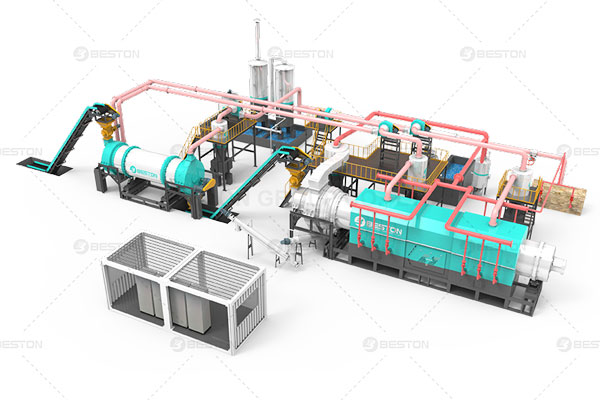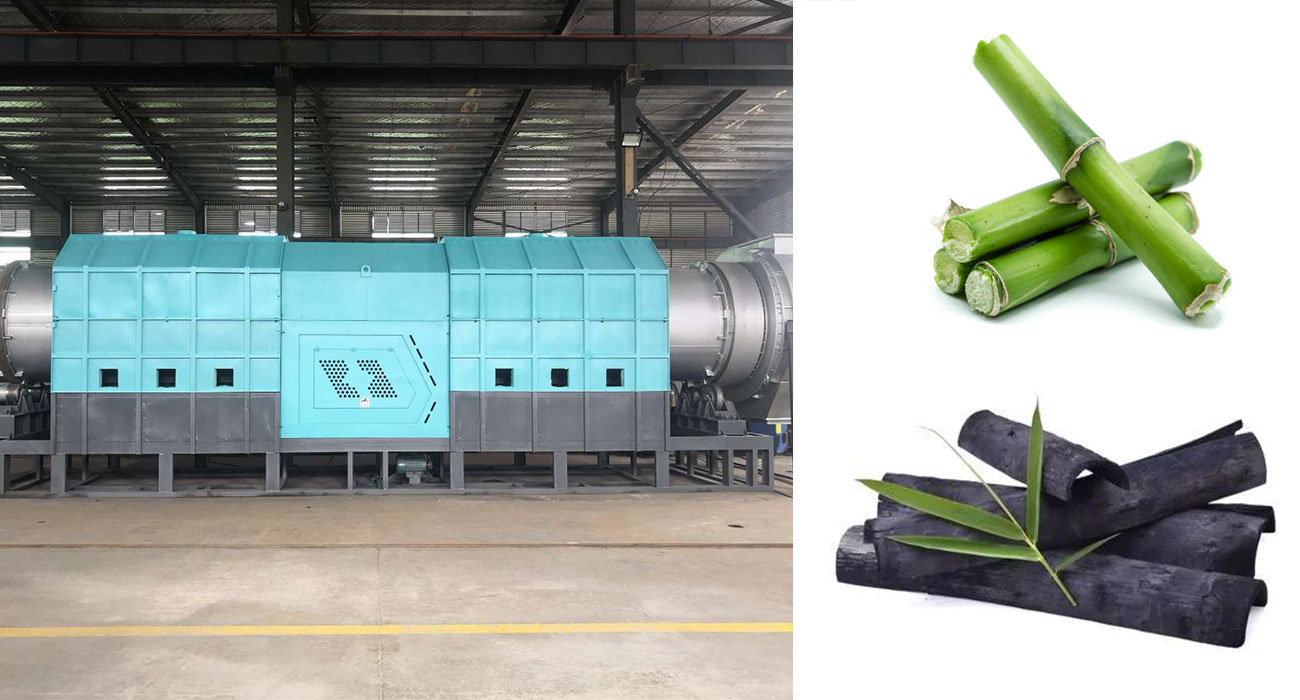In the pursuit of sustainable and environmentally friendly solutions, biomass carbonization emerges as a brilliant star on the horizon. This innovative process harnesses the potential of various organic materials, from sawdust to coconut shells, to craft valuable carbon products. Let’s delve into the fascinating world of biomass commonly used to make carbon.
The Biomass Carbonization Machine: A Marvel of Innovation
At the heart of this eco-friendly transformation lies the biomass carbonization machine. This marvel of engineering provides a controlled environment where organic materials undergo a remarkable metamorphosis. Through a process involving high temperatures, these materials are converted into carbon-rich resources that hold immense promise in a variety of applications.

Common Biomass Used for Charcoal Production
- Rice Husk: A Grain’s Second Life
Rice husks, often overlooked after the rice is harvested, are given a new lease on life through carbonization. These husks yield a carbon-rich material that excels in the agricultural sector, contributing to improved soil quality and crop growth.
- Bamboo: The Green Giant
Bamboo, known for its rapid growth and renewable properties, has become a pivotal part of the carbonization story. Its cellulose-rich composition, once carbonized, finds applications in the creation of activated carbon, widely used in water purification and air filtration systems.

- Sawdust: The Unlikely Hero
Sawdust, often considered a byproduct of the woodworking industry, is a prime candidate for biomass carbonization. Its microfibrous nature makes it an ideal starting material. Under the watchful eye of the sawdust charcoal making machine, sawdust evolves into a versatile carbon source, with applications ranging from agriculture to metallurgy.
- Palm Kernel Shell: A Treasure in Disguise
Palm kernel shells may seem like an unlikely candidate for carbonization, but they, too, undergo this remarkable transformation. The resulting carbon product has a variety of uses, from energy production to the production of biochar for agricultural enhancement.
- Straw: From Fields to Carbon
Agricultural straw is yet another source of biomass waiting to be transformed into carbon gold. This humble material, once carbonized, plays a vital role in soil improvement and the creation of sustainable biofuels.
- The Versatility of Coconut Shells
Coconut shells, once discarded as waste, are now highly prized in the world of carbon production. Their rich carbon content and inherent durability make them a valuable resource. These carbonized shells find their way into water purification, air filtration, and even as fuel for various industrial processes.
- Wood: The Timeless Carbon Contributor
Wood, a symbol of longevity and sturdiness, is transformed into elemental carbon through the magic of biomass carbonization. The carbonized wood proves its worth in metallurgy, as an essential ingredient in the production of high-quality steel. Wood charcoal making machine is more and more popular.
- Jute Stick: Reinventing a Classic
Jute sticks, often considered a traditional material, find themselves at the forefront of carbon innovation. Carbonization reveals their hidden potential, making them valuable in industries as diverse as metallurgy and water purification.
A Sustainable Future
In a world where sustainability is paramount, the journey from ordinary biomass to exceptional carbon resources stands as a testament to human ingenuity. These materials, once seen as mere byproducts or waste, are now at the forefront of building a greener, cleaner, and more sustainable future. Biomass charcoal machine, the unsung heroes of this transformation, continue to pave the way for innovative solutions that benefit both the environment and society at large.
The power of transformation lies within the carbonization process, where temperature, pressure, and controlled conditions work in harmony to reshape organic matter into valuable carbon resources. Each keyword – biomass carbonization machine, sawdust, coconut shell, wood, rice husk, bamboo, palm kernel shell, straw, and jute stick – represents a unique chapter in this compelling story.
So, as we look to the future, it’s essential to recognize the potential of these biomass materials. From waste to wealth, they have unlocked new possibilities and continue to play a pivotal role in the quest for a sustainable and environmentally responsible world. The key to progress lies in our ability to innovate, adapt, and embrace the transformative power of biomass carbonization.